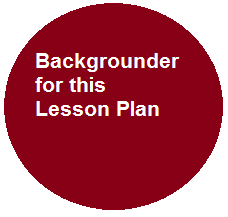Iran
Download the Supplemental Materials for this Lesson Plan
The United States, Iran, and Western Asia (a one-week mini-unit)
This lesson could be used in a government/civics course, a U.S. history course, or a world history/global studies course. Grades 9-12, but more accessible for upper grades.
Standards correlation: Common Core Standards—Reading Standards for Literacy in History/Social Studies 6-12: Grades 9-10: 1, 2, 3, 4, 6, 8. Grades 11-12: 1, 2, 3, 4, 6, 7, 8, 9.
Resources:
Benjamin Netanyahu speaking at AIPAC (video clip),
Iran backgrounder
Bret Stephens: "(How) Should Israel Bomb Iran?” (WSJ article, see attachments)
Kenneth M. Pollack “Sliding toward a War with Iran” (CBS News)
Tom Engelhardt: "Iran Through the Looking Glass" (TomDispatch & HNN)
Michael Rubin: "Tehran's Nuclear Endgame" (National Review)
Barry Rubin: “Only Half of the Story: The Iran Crisis and Israeli Nukes”
Map of the Middle East
Reading guides for all readings; note-taking guides for debate preparation; teacher backgrounder.
Objectives:
- To develop an understanding of the conflicts and complexities related to Iran’s (alleged) efforts to develop nuclear weapons, in particular relations among the United States, Israel, and Iran.
- To develop students’ ability to pose meaningful questions about current controversies and their roots in the past.
- To recognize and evaluate the validity of different perspectives.
- To debate three distinct policies to respond to Iran’s nuclear ambitions.
DAY ONE:
Introduction (Bell Ringer):
- Play the CNN clip (external link) on the March 5 meeting between President Barack Obama and Israeli Prime Minister Benjamin Netanyahu. Ask students to explain Obama’s position on Iran and nuclear weapons in their own words. Survey the class for knowledge of relations between the United States, Israel, and Iran. Press individual students to explain where and how they developed their impressions and “knowledge” about these relations. Alert them to an imminent deepening of their knowledge. Use of a map of western/central Asia (aka the Middle East) will be essential.
Activities
- Hand out the Wall Street Journal editorial urging an Israeli attack on Iran, along with the reading guide. When the class has completed the reading, divide into groups to compare responses and revise and complete the guide. Engage them in a whole-class discussion of the guide’s questions. For the final question, asking them to pose necessary questions regarding the editorial’s validity, develop a list. If students encounter difficulty formulating meaningful questions, prime the pump with your own (see teacher’s guide for suggestions).
- Hand out the backgrounder, to be completed for the next day. In addition to the questions accompanying the backgrounder, students should read with a special attention to corroboration or denial of the WSJ editorial’s assertions, and instructed to record them specifically and in writing; they should respond to the questions they posed in the WSJ reading guide, historical and current, also in writing; and to any other clarifications of the editorial (written).
DAY TWO
- Discuss the backgrounder and student responses in groups, whole-class, or both. Students need to be encouraged to be clear and specific, and to recognize issues which need more knowledge and clarification. The backgrounder guide concludes by asking what knowledge still needs to be gained to evaluate the state of relations between the U.S., Israel, and Iran, which introduces the next activity.
- Explain that the matter of Iran’s nuclear capacity will be explored more deeply by further reading of articles, with different groups assigned different perspectives. Each group will discuss its article in depth, then the groups will be jigsawed so that the perspective of each article is shared in each group. Distribute the articles and reading guides, due the next day.
Essential question: What policy should the United States adopt regarding Iran’s presumed nuclear ambitions?
DAY THREE
First, each article group (or groups—depending on class size, more than one group can read and discuss the same article) convenes to discuss responses to the reading guide. Then the groups are jigsawed to explain and discuss all four articles. Distribute a new note-taking guide for students to record insights, information, and questions. (I have included a guide for the Bret Stephens Wall Street Journal piece, since his arguments will be useful to some groups. Students can fill it in to refer to as they plan their debate arguments.) Encourage students to make use of the backgrounder’s information as well.
DAY FOUR
- Divide the class into three groups, corresponding to three options: war with Iran, either initiated by the U.S., by Israel with U.S. support, or by Israel without U.S. support; continued sanctions; or acceptance of a nuclear Iran. Each group should take some time to organize points in support of their argument, anticipate counterarguments, and plan rebuttals. The evidence contained in the articles should be deployed specifically. Each group should select spokespersons to make opening statements and rebuttals. Opening statements and rebuttals should be timed, and planning time between statements and rebuttals allotted.
- Lead a concluding discussion, prepared by discussions in the debating groups, focusing on which group made the most convincing argument, and why.This may spill over into a fifth day.
Summary/enrichment: Assign an essay explaining which policy each student regards as the best, supported by logical use of specific evidence.
